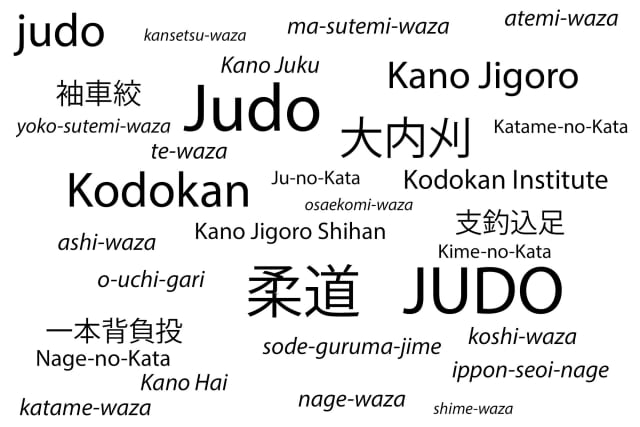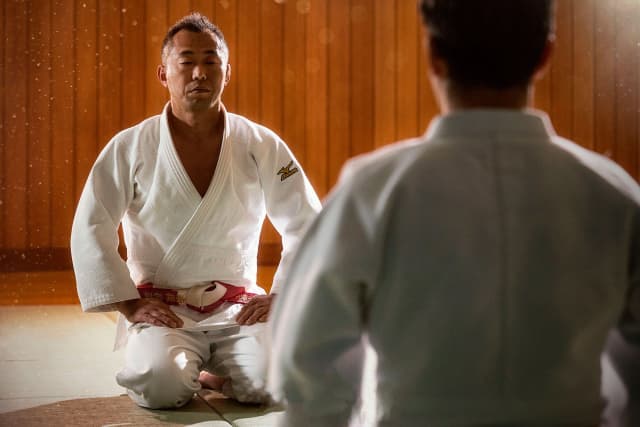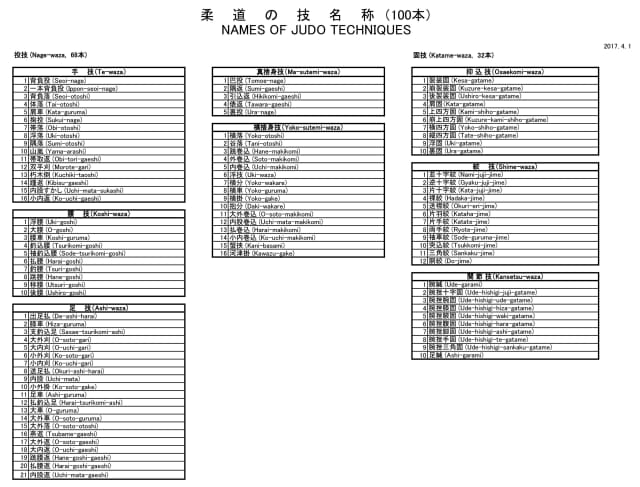Differences in the written English (main official language used by the IJF) of many words are due to the transliteration style of the Japanese language. Thus, in judo books and other published materials, we can find different versions of the same word, e.g. kumi-kata and kumikata. What is the correct answer?
This first article aims to clarify the way to use Japanese words related to judo, when we should use capital letters, when a dash is needed and other particularities.
JUDO 'Judo' should not be capitalised unless the word 'judo' is at the beginning of a sentence, is used in the name of an organisation which can be reduced to an acronym, such as International Judo Federation (IJF), or is part of a specific programme such as Judo for Peace, Judo for Children, World Judo Day. The same applies with 'judoka.’
KODOKAN Kōdōkan Institute is written as Kodokan Institute and Kōdōkan jūdō is written as Kodokan judo.
KANO There are also words related to Kano, such as: Kano Jigoro (Jigoro Kano), Kano Hai (Kano Cup), Kano Juku (Kano Academy) and we often use 'Kano Jigoro Shihan' to designate the founder of our sport. In all cases the Kano part of the phrase would begin with a capital letter, due to its origin, however the additional words may or may not be capitalised, depending on context.
JUDO TECHNIQUES In the Sport Organisation Rules (SOR), section 'H1.1 Glossary of Japanese Terms' details the correct and accepted use of Japanese terms. In each box the word/text on top is from the original SOR glossary and below is the word/text as it is in the Kodokan dictionary (Kōdōkan, New Japanese - English Dictionary of Judo, 2000). If there is only one word/text it is the same in both reference documents.
SOR - English Version
SOR - Version française
In the 'Names of Judo Techniques' document, you will find the names of the 100 Kodokan Classified Judo Techniques as they should be written when translated into other languages.
In English and other languages we should say: 一本背負投 => ippon-seoi-nage 支釣込足 => sasae-tsurikomi-ashi 大内刈 => o-uchi-gari 袖車絞 => sode-guruma-jime
Every technique name is written in lower case and between words there is a dash (-), unless the term is written at the beginning of a sentence, when it then requires a capital letter at the beginning of the first word only.
The Kodokan Institute classified judo techniques as nage-waza (68 throws), katame-waza (32 grappling techniques) and atemi-waza (24 strikes).
Nage-waza is divided in tachi-waza and sutemi-waza. Tachi-waza is divided into three groups: te-waza (16 hand techniques), koshi-waza (10 hip techniques) and ashi-waza (21 foot and leg techniques). Sutemi-waza is divided into two sub-groups: ma-sutemi-waza (5 rear sacrifice techniques) and yoko-sutemi-waza (16 side sacrifice techniques).
Katame-waza is divided in osaekomi-waza (10 pinning techniques), shime-waza (12 strangling techniques) and kansetsu-waza (10 joint techniques).
Atemi-waza is divided in ude-ate (17 hand and elbow striking techniques) and ashi-ate (7 foot and knee striking techniques).
KATA The International Judo Federation chose five kata for international events, but in total there are nine recognised kata described by the Kodokan Institute:
Nage-no-Kata (15 techniques)
Katame-no-Kata (15 techniques)
Kime-no-Kata (20 techniques)
Ju-no-Kata (15 techniques)
Kodokan-Goshin-jutsu (21 techniques)
Itsutsu-no-Kata (5 sequences)
Koshiki-no-Kata (21 techniques)
Seiryoku-Zenyo-Kokumin-Taiiku (17 movements)
Kodomo-no-Kata (no official number yet)
The names of the kata start with a capital letter (e.g. Nage-no-Kata, Itsutsu-no-Kata, Kodomo-no-Kata), as they represent a group of techniques that is specific to each kata. Those names also represent a specific choreography of the techniques.
PLURAL, GENDER AND OTHER PARTICULARITIES Japanese words being, by definition, of Japanese origin, even when transliterated, shall not be used in a plural form: one judoka, two judoka. The gender of the word (present in some languages) shall not be changed either. Thus, all words are invariable.
Italic: judo remains written judo when other Japanese terms can be written in italic form: a judoka performs a seoi-nage that could be demonstrated as hidari seoi-nage (left-handed) or migi seoi-nage (right-handed).
Ukemi: In terms of ukemi (breakfall) we consider they should be written as mae-mawari-ukemi (falling forward with a roll) and ushiro-mawari-ukemi (falling backward with a roll), migi yoko-ukemi (right side fall) and hidari yoko-ukemi (left side fall).
EVENTS Words such as ‘world’ and ‘championship’ should only have capital letters if they are part of a specific, exact event title/name.
Example:
The Tokyo 2019 World Championships.
The world championship is the flagship event of the International Judo Federation.
When one talks about a ‘world champion’ this should not have capitals as it is a noun, not a proper noun: Ono Shohei was the 2019 world champion. But Teddy Riner is twice Olympic champion? ‘Olympic’ is always capitalised.
SCORES The positive scores are waza-ari and ippon. The negative scores are shido and hansoku-make. The plural is two waza-ari, two ippon, two shido and two hansoku-make.
COMMANDS The commands in judo are: Rei! => bow Hajime! => begin Mate! => stop Osaekomi! => immobilisation/ holding down Toketa! => end of immobilisation Sono-mama! => pause Yoshi! => continue
Sore-made! => end of contest
This is the standard, but don't worry, nobody will receive a shido if they make a mistake. It's better if we speak the 'same language' though.
Prepared with the support of the Kodokan Institute and Daniel Florin Lascau, IJF Sport Director and IJF Refereeing Commission Supervisor.




